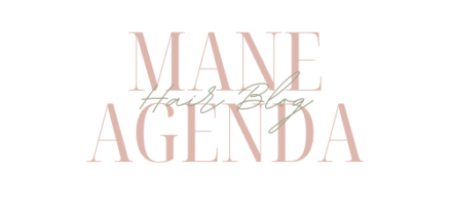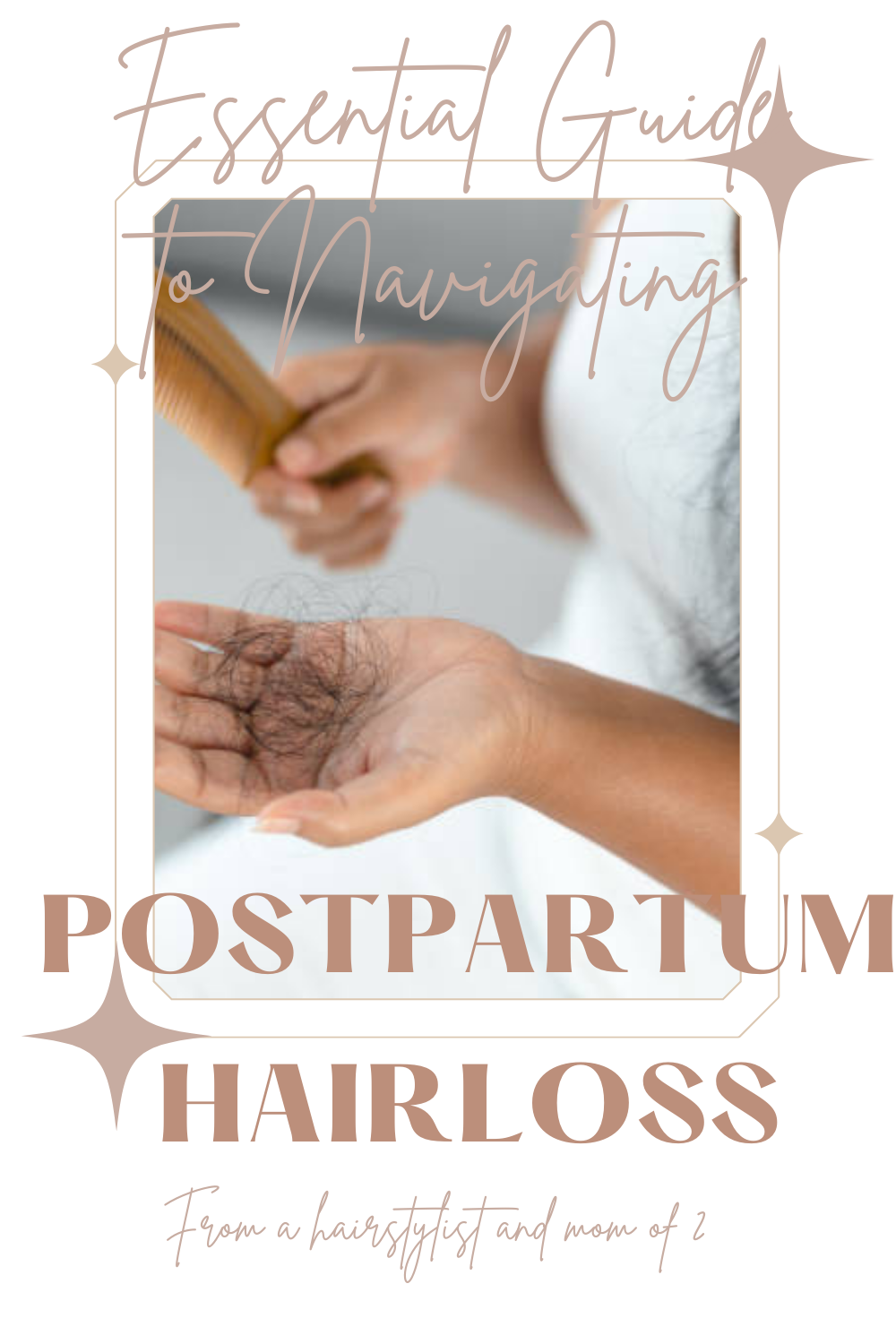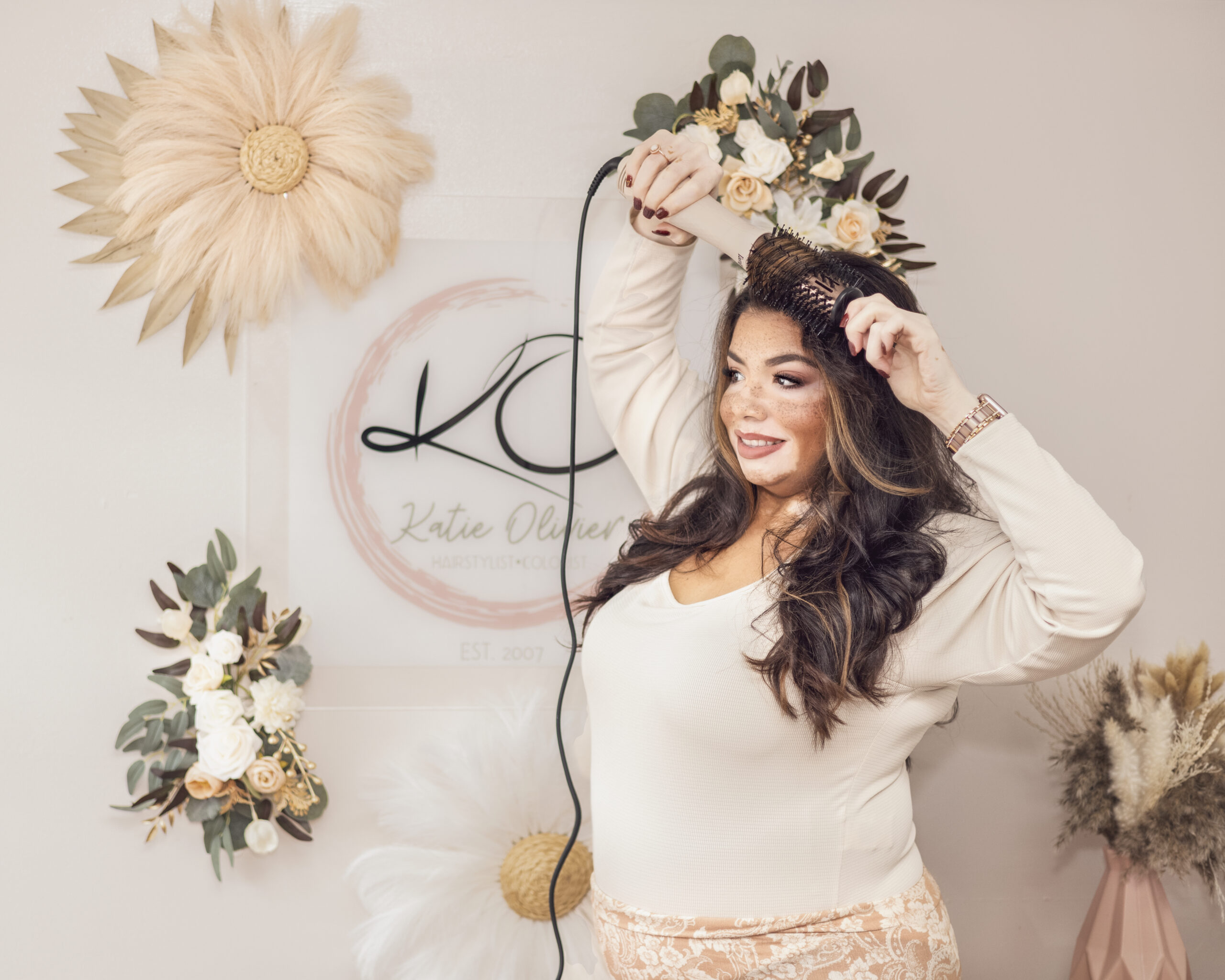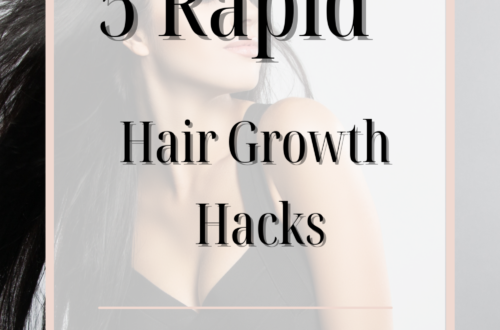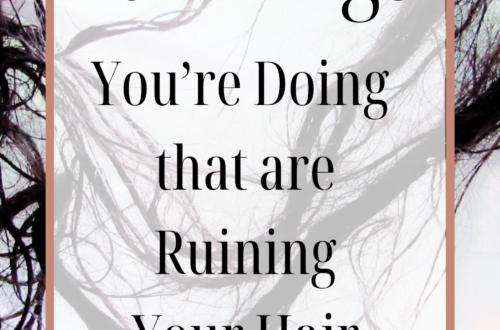Have you just had a baby or are you pregnant now? Don’t get too comfy with that luscious thick pregnancy hair, your hormones have other plans. About half of new mamas experience postpartum hair loss. So let’s talk about it, and educate ourselves on why it happens and what we can do about it.
Why does it happen?
Postpartum hair loss occurs in about half of women who have recently given birth. It usually begins around 3 months postpartum but peaks around 4-5 months. You’ll usually start to notice it in its peak. It’s no secret that your hormones are changing at this time. After giving birth your body goes through a big drop in estrogen levels and your hair transitions from a growth cycle to a shedding cycle. During about the second trimester of pregnancy, we stop going thru our shedding phase of hair growth which is why we end up with extra thick hair by the end of pregnancy. All of those hairs that would have cycled thru the shedding phase by now, start falling along with your typical shedding phase starting up again. Causing your brush to fill up with hair and your hair being found on every square inch of your bathroom.
How much hair loss is normal?
This “excessive shedding” can be extremely scary, especially for first time moms who aren’t expecting it. We typically loose about 75-100 hairs on a daily basis. During this stage its common to loose 3 times that amount! We also have to take into account the length of your hair. If your hair is shorter in a bob type haircut, your 100 daily shedded hairs are going to look a lot different than 100 hairs shedding on someone with waist length hair. It’s very common to notice way more hair loss for someone with longer hair. I promise you, wont be bald when this is done sis.
What can I do about postpartum hair loss?
Since this is a natural process, there really isn’t much that can be done; besides letting nature take its course. What you can do instead, is opt for a different haircut or style that will make your hair look fuller to camouflage what’s happening behind the scenes. Whether that means a shorter haircut, opting for a blowout vs your regular styling routine to help with fullness, or wearing your natural textured hair to create the illusion of density; figure out what’s going to help you and go from there. You can try volumizing shampoos, conditioners and styling products to help your hair appear thicker.
How to deal with these crazy hairs once they grow back?
Some people don’t even realize they’re going thru PP hair loss until their hair starts to grow back in. All of a sudden, you wake up one day and you have an inch long mane all along your hairline standing straight up. There are a few things you an do to help with this until the hairs get longer to blend better.
- Headbands– These can be a great option at different phases of hair growth. When the hairs are just beginning to grow in, I would opt for a “hair band”, band type head band to wear to mash them down. A few months down the line, when they get a little longer and they’re wanting to just stick out of pony tails or anything you try to do with your hair, your can choose a more of a head band style to push them back.
- Lay them down- If it’s really getting to be a problem because you prefer a sleeker style and your hairs just aren’t sleeking, grab for some product! Edge control, molding cream and texture paste are all great options depending on the look you’re going for and your hair type.
- Bangs– Once your little hairs are long enough to cover your forehead, which could be as far away as 18 months to 2 years PP, you could cut bangs and shape the rest of the hairs around your face to make it look more intentional.
As most of you know, I had a baby 15 months ago. So, that means I’ve just recently experienced this myself. I’m still struggling with these little baby hairs everyday but everyday gets a little better. I’m currently in my voluminous blowout / headband era trying to control them, but some days the hairs still win! So if you’re currently going thru this just remember, this too shall pass. It’s only a phase and you’ll be out of it before you know it.
If you’re pregnant, recently postpartum, or know someone who is, please share this information with them. We all need to feel prepared, educated and empowered. If there’s any further details you may need on this subject, leave a comment below!
Subscribe for my Bi-Monthly Emails to be sure you don’t miss out on any tips, tricks, or tutorials.
